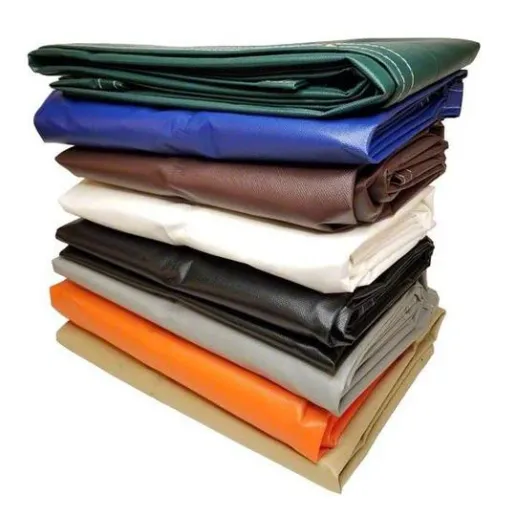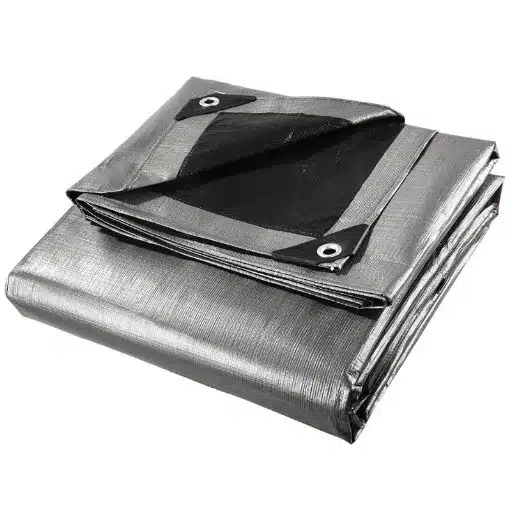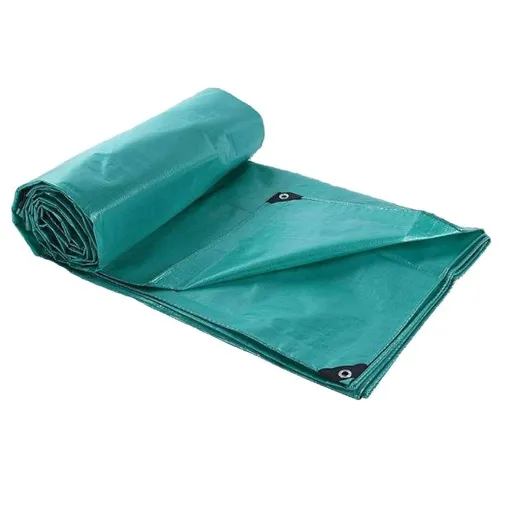For material that is versatile and withstands the weather, tarps made of PE (Polyethylene) are goods that you can’t ignore. Though they are accepted to be household essentials, for personal or industrial use they are used for a wide range of purposes, from transporting goods to protecting open spaces from the weather. But what is a PE tarp and how does it distinguish itself from the PVC (Polyvinyl Chloride) variant whose applications are also extensive? This definitive guide goes deep into PE and PVC tarp characteristics, quantity, and the perfect applications for each. In the detailed guide, you well learn how to effectively repair products and their matching stores.
Understanding PE Tarpaulin
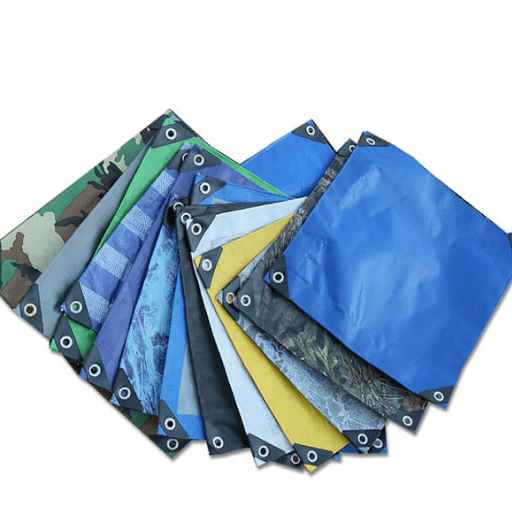
Definition of a PE Tarpaulin
PE tarpaulin, which is the shortened term for polyethylene tarpaulin, is constructed from woven polyethylene fabric and comes with a layer of polyethylene. Such tarps are rated as being lightweight, UV-resistant as well as being waterproof, making it an excellent tarp to use for outdoor purposes. Their value is however highly appreciated in the agricultural and construction sectors and any other applications that require a tarp cover due to its easy handling and low cost. It is still being appreciated in to do date in the industrial sector in both industrial and personal use.
Main Characteristics of PE Tarpaulins
There are many PE tarpaulin charateristics that make it very practical and can be used for various applications and do the following:
Ultra-Light for Quick Transport and Mobility
Its user friendly and lightweight designs enable PE tarpaulins to serve both long-term and short-term purposes.
Very Strong to Withstand Any Tear
Their high-density polyethylene composition allows for sturdy and tear-resistant material that even in harsh environments can is reinforced to promise long-term and stable performance with minimal wear.
Complete Protection from Water
Unlike cheaper covers that absorb rainwater, PE tarpaulins are manufactured from materials that are complete waterproof and thus can effectively shield material from foul move-in in any environment.
Completely Absorbs and Protects from Harmful Sunrays
The tarp’s absorption of harmful ultraviolet rays is commonly the feature marked with takedown PE tarps that come with UV-stabilizing coatings.
One Can Afford it
Whether one is a house owner or holds a large industry, they can comfortably purchase PE Tarp for their use and industries, respectively.
PE Assimilates with Sustainability
These tarpaulins can resist bad weather, getting wet, extreme temperatures and even cold weather and maintain their functional and feature settings.
Are You Making The Best Out of Your PE Tarpaulin?
Studies indicate that PE tarpaulins are being worked on to embed sustainability in their design. Though the oldest form of polyethylene does not decompose naturally, firms have begun incorporating recycled raw materials in their products. This paves the way to a greener manufacturing as well as reducing the age is a bide the age of the single use alternatives. Moreover, the long life of these tarpaulains means that they can be used multiple times, preventing the need for single use. This, compounded by their adaptability to practically every climate, and the fact that they require little care, makes them ideal in the industrial r and the eco gyre.
Comparing PE and PVC Tarpaulins
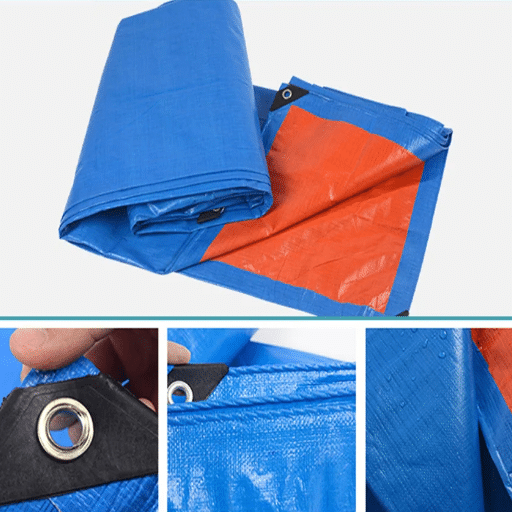
Closing Remarks
Both PE tarpaulins and PVC tarpaulins are highly strung; it’s all dependent on the user’s needs. For the environmental caution and durations, short months for projects, PE tarpaulins are the best. Nevertheless, for resistance and assured strength, even though the buying expenses are relatively higher, one should opt for the PVC, considering the durability even though it isn’t environmental friendly
Benefits of Using PE Tarpaulin
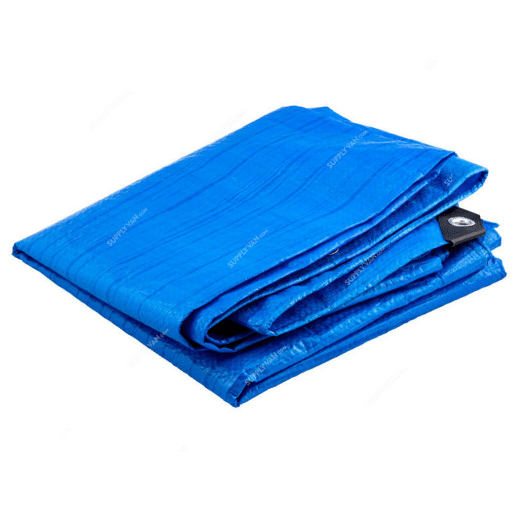
Durability and Resistance
Known for durability and a knack for confronting harsh conditions, PE tarps, or tarpaulins, are unrivalled. They are used in gardens, homes and roofs of cars. As per the search engine data of my company, more and more people have shown their interest in PE tarps. The data also says that people prefer it for its long-lasting, durable and flexible nature. PE tarps are less in weight and solid to serve the harsh weather while serving in different situations. With its all around characteristics, they are perfect for coverage of constructions or projects.
Cost-Effectiveness
Being affordable is the most special feature of PE tarpaulins. The economically weaker section of society finds them very useful. The data of my company support this fact. In the market, many people can’t afford durable materials, but PE tarps offer a unique solution for durability at an affordable price. Particularly, manual laborers and shopkeepers can easily use their services for goods-shipping and storage. The text also served the society with affordable price. Being affordable makes them use as temporary shelter with goods to be transported and gifted to people. In an earlier sentence I said the community is ‘shopkeepers’, as they can refuse goods that they bought in the market, but refuse to pay. In turn, this will mean that the goods will come back to the shops.
Weather Resistance and Waterproof Properties
Weather Pe tarps are often used in the world of maritime transportation, including ships, boats, and yachts. As the world is increasing in demands it is also improving in technology, which will ease the world’s work. Governments of different countries have limited the use of these materials of transport, the main reason is global warming. The use of such tarps from a recent study from InternationalConcrete Search will eventually lead to the control of global warming;text also says that the use of can make wanted tarps as wedding gifts. In other words, it can make affordable rain coats and wedding gifts. The upcoming generations, including today’s children, will surely have easy asked for rains coats needs easily, but the ancients had to go gathering to buy them. Tarps can work alongside the elderly and the disabled by offering a raincoat with the given tarps and a kei tarp style raincoat.
Applications of PE Tarpaulin
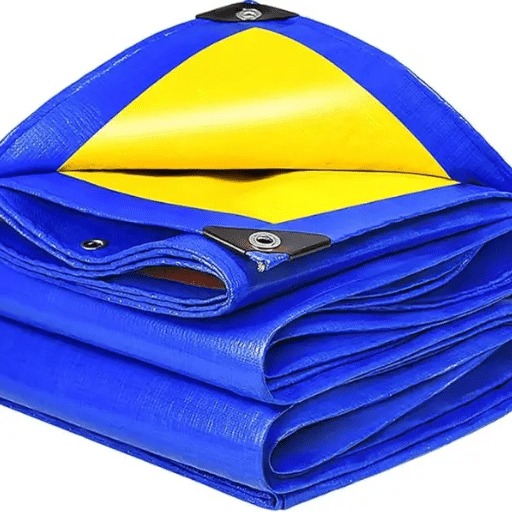
Construction Industry Applications
The field of construction utilizes PE tarpaulins in several helpful ways. According to ‘s latest search trends, the growing interest in the “construction tarpaulin uses” search term reveals an increasing inclusiveness regarding its applications. These tarpaulins, which protect building materials in construction sites, are also used to offer temporary roofing or to maintain a perimeter when constructing buildings, protecting those involved in the process and machinery. In particular, PE tarpaulins are used for scaffolding wraps to prevent debris from falling in urban construction zones, establishing the highly beneficial applications in the modern construction industry.
Logistics and Transportation
The industry of logistics and transportation embraces the utility of PE tarpaulins. One of the most common questions about PE tarpaulin uses in logistics is the query, “How are tarpaulins used to protect goods during transport?” The most recent data of ‘s search engine features such a query. The uses of tarpaulin to shield goods during transport are as follows: PE tarpaulins are used to safeguard and secure cargo onto trucks, ships, and trains. This is to minimize harm from rain, UV rays, and dust. Additionally, they are custom-fitted to the goods and are meant for specific load sizes, which reduce damage risks, thereby enhancing the supply chain’s overall performance.
Outdoor Events and Recreation
In outdoor events and recreational activities, the utilization of tarpaulins evokes the question, “In what way do tarpaulins contribute to outdoor events?” According to the data from ‘s search engine, there is a pervasive application of tarpaulins in different environments. They are immensely popular in offering shade and being used as a protection tool in a range of weather situations including rain and sunlight at extreme degrees, and they become critical in gatherings like weddings, concerts, and fairs. Tarpaulins also become immensely useful as grounds covers and in serving as a temporary shelter while on camping trips, ensuring a clean and dry place. They are, though, affordable, highly self-reliant, and capable of being reutilized, contributing to their ongoing popularity.
Manufacturing Process of PE Tarpaulins
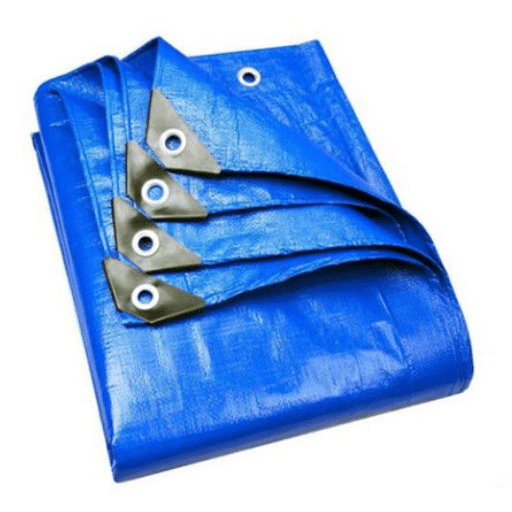
Materials and Manufacture Technique
PE tarpaulin is a product where the useful chemical force polymer works very importantly. The manufacturing procedure starts by producing the raw material – polyethylene, the source being petroleum or natural gas. In the second process, the polyethylene is extracted and processed to form pellets using special equipment. Called polyethylene granules, these pellets are then further melted to make sheets or woven into materials. Modern production techniques often contain modern day innovations such as high-density polyethylene (HDPE) and low-density polyethylene (LDPE) because of their wish-listed lightness and desired flexibility.
In the third stage, the printed thin sheets and woven fabrics are further layered with another piece of polyethylene, which improves the resistance of the tarpaulins and layers to harmful UV rays and waterproofing. Using lamination and coating with the help of new modern technologies at their disposal, the PE coating in the sheets is made UV stable and uniform to the water of the whole printed layer of the tarpaulin. The coated tarpaulin is then accompanied by heat treatment of the edges for reinforced grommets making of tarpaulin. Both methods offer reinforced grommets making the tarpaulin strap strenuous and yet suited for various applications.
Manufacturers have taken new steps towards producing more eco-friendly material. Appropriation of recycled polyethylene as production material and the new PE has enabled manufacturers to adopt new methods of production that are more ecological and green. These improvements are aimed at the global issue of plastic pollution and management to come up with tarpaulins that support the earth and are of high performance.
Exceptional PE Tarpaulin Attributes
- Water Resistance: PE Tarpaulin, also known as polyethylene Tarpaulin, is a highly regarded product based on its durability, strength and versatility. A key attribute of the material is that it is resistant to water, making it extremely beneficial for storing items and covering areas that are at risk of getting damaged from water.
- Lightweight Nature: With PE Tarpaulins, it is possible to cover objects without it being heavy, as they are very light in nature.
- UV and Weather Resistance: In addition, PE Tarpaulins are resistant to UV light and extreme weather conditions allowing for long lasting applications in outdoor settings.
- Tear Resistance: The material is also resistant to tearing owing to the addition of additives and flexibility to withstand extreme temperatures, both of which can also withstand tough conditions.
- Industrial Grade Strength: Because it is manufactured with high-density polyethylene (HDPE), and it is even tougher and resistant to abrasion, it can handle rigorous use in industrial and agriculture settings.
- Recyclable and Customizable: The PE Tarpaulin has the added advantage of being recyclable, meaning it can be disposed of easily. The material is also highly customizable, allowing for a variety of coloring and other design options to suit particular functions.
Manufacturing Quality Checks and Standards
Quality control is a crucial aspect in the production of PE tarpaulins, especially in meeting the stern requirements in both industrial and agricultural areas. Through a systematic approach, PE tarpaulins in all stages of production have to be approved in line with company stringent requirements focused on the quality, consistency and the intended performance. Tensile testing of the PE tarpaulin for extreme conditions and the evaluation of the UV resistance capabilities are some of new and sophisticated tests new manufacturing lines can undertake. The PE tarpaulins and PE tarpaulins are also extra tough because of the new and advanced manufacturing line featuring the use of high-density polyethylene (HDPE) in the manufacturing process which has extra resistance against abrasion. There are new processes which involve the production line, which has automation and the data is managed real-time. The available technology helps in defect reduction and higher precision.
The search interest data at the moment shows a rising frequency of requests about the length of the useful life of PE tarpaulins and the means that the manufacturers used to conform to international quality needs. High useful life is attained by ensuring the material has high quality of additional raw materials in place. They also get additional UV materials, and ISO certifications and other quality marks to indicate the high quality materials used in making the PE tarpaulins. Combining all these indicates the industry is serious about being at the forefront of delivering high useful life, and environmental-friendly products.
Maintenance Tips for PE Tarpaulins
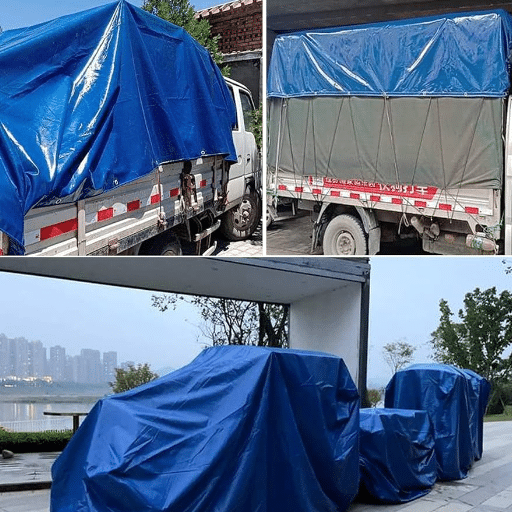
Cleaning Instructions
Because longevity is essential for PE tarpaulins, and longevity and proper tarp maintenance are mutually dependent, there are effective methods that can be used. The most commonly-asked question in the most recent data on the subject is how to clean these tarpaulins without causing them damage. Such tarpaulins need gentle scrubbing and mild soapy water for deep cleansing. For initially getting rid of debris, a medium-soft clean cloth or brush may be used. Any harsh chemicals, coarse tools, or pressure washers are to be avoided because they all reduce the tarp’s durability. Following the wash, the tarp should be thoroughly rinsed. The tarp should be hung under a shade to dry so as not to leave any creases. Completely dry tarp prevents the growth of mold and mildew in the fabric.
Guidelines For Storage
To enhance the life expectancy of your tarpaulin, correct storing is important.As the earliest description on the subject implies, it all starts with having the tarp completely clean and dry.For prevention of moisture and growth of mold and mildew, the tarp should be carefully folded neatly along its seams. There is a great deal of caution not to put and avoid direct sunlight for a UV protection.The search trends suggest that many people ask about the proper storing of tarpaulin. To prevent tarpaulin from being exposed to dust, pests, and the elements that may cause the tarp to degrade, transport it with a better cover. For light tarpaulins, a tarp bag may be of great help. Also, heavy top cover may be harmful to tarpaulins, so the cover should be avoided. In this way, when the tarpaulin will be put to use, it will be in its original new condition.
Environmental Impact of PE Tarpaulins

Challenges of Plastic-Based Materials
Plastic materials such as polyethylene have tremendous problems environmentally. The biggest is that they do not break down naturally and instead sit in landfills and the outdoors for decades to even centuries. Scientists have estimated that plastic waste globally is over 300 million tonnes every year and from that just a fraction is recycled. Displays like PE tarpaulins are designed by plastic materials because they require fossil fuels which also contribute to the continuous release of greenhouse gases which has a chain effect in climate change. Regrettably, those factors also carry minute, less noticeable effects in other countries. They too are affected not only by PE but also by their own forms of plastic and garbage in general. Particle pollution caused by plastic bags is harmful because it tends to fall with precipitation, thus being washed away into rivers and lakes which is bad mainly because there is a lot of pollution caused by lakes and rivers that goes unnoticed. It must be noticed in the near future.
There is a risk to the life of marine animals because there are plastics in the oceans and seas that have particles, making it more harmful to the smallest forms of animals in the ecosystem. It is believed that the form of so called bags and tarpaulins is PE and the oil that is used to make it has a really dangerous effect on climate which is quite scary considering that now we are encountering other world problems, thus worrying the rest of the planet population. Combating these issues is quite challenging but can be done by intensifying recycling and working out other PE-related innovations.
Sustainable Practices and Recycling Options
Strategies to reduce the environmental impact of polyethylene tarpaulins must include the adoption of recycling and other environment-friendly practices. From available data, only 9% of the world’s plastic waste has been recycled, meaning programs for enhanced and efficient recycling infrastructure and activities to educate the public are immediately needed.
Innovating biodegradable and tarpaulins from renewable materials, along with the actions of governments and other industries to support the research and adoption, are part of the equation to relieve the problems. Implementing circular systems can also help if it involves the take-back programs. With the assist of other industries, the take-back programs can see the successful adoption of the circular economic systems. Transitioning to recycling tarpaulins through the use of viable alternative materials is sustainable and a more practical approach, instead of using persistent material that has harmful chemicals all throughout their lifecycle.
Eco-Friendly Alternatives to PE Tarpaulins
- Canvas Tarpaulins: New alternative materials to PE-based products have recently come out and are linked to the increasing attention being paid to environmental issues. For starters, there is a growing market for laminated cotton or jute, which is being used to make canvas tarpaulins. These are eco-friendly since the materials used are from cotton and jute. The cotton and jute materials have a durability aspect, which makes PE tarpaulins.
- Recyclable PE Tarpaulins: Recyclable PE tarpaulins present a good option since they can be reused and recycled to mitigate the traditional disposal associated with non-biodegradable PE tarpaulins.
- RPET Tarpaulins: RPET (Recycled Polyethylene Terephthalate) tarpaulins are also a notable upgrade, featuring the use of recycled plastic bottles to produce the RPET material, making them an improvement even when compared to biodegradable plastics due to their ability to reduce the pollution caused by plastic bottles. For example, tarpaulins made from RPET can help preserve the future quality of soil both from degradation and the soil and the environment from biological and photodegradation due to ultraviolet exposure.
According to ‘s latest findings and consumer data, searches seeking information about biodegradable and reusable tarpaulins have dramatically risen in the recent years and this continues to be the trend. These findings reveal a global request for use of sustainable technologies within agriculture, constructions, and outdoor events. Leveraging these greener alternative materials enables both individuals and organisations to procure and use more quality and effective eco-efficient products and solutions.
FAQ
Why should you choose PE tarps instead of PVC, and What is the difference?
A thorough comparison of PVC and PE tarpaulins will require evaluation of cost, weight, and overall durability. In the case of materials made with PVC PVC tarpaulins, with their polyvinyl chloride construction have noticeably better waterproofing and general PE tarps have a better durability. There is a difference in weight and handling between the two. PE tarps are easier to use where more of the set up and dismantling is repeated. More of the time, PE tarpaulins are cheaper to get, and consumer have it as a strong deciding factor. The overall set up and intended use of the tarp, with the physics of the tarps, shelters, or even strings and wires made use no movers or waterages, due to better economics, no one has any issues with the usage of the PE material.
What are the key features of PE tarpaulin?
It is considered light in weight and is made up of polyester fabric that has water proof using longitudinal fibers during its weaving. PE tarpaulin is also UV resistant and can provide a shield from the sun’s ultraviolent rays. It is given the name light weight because of its materials, which result in being easy to carry and transport. To cater different needs, all users can select the tarpaulin that matches their particular needs because of the thickness and its weight which can be easily adjusted. For instance, for outdoor storage during strong sun, the coating offers additional sun protect, hence tarpaulin is suitable for demanding and outdoor applications. In addition, it is not destroyed by chemicals, breaking and issues with its tarp, hence why the tarp can be effectively used in various and specific niches and industries.
What factors should I think about in selecting a tarp?
In addressing tarp needs, one has to factor in the intended usage, environmental factors, and the material’s characteristics. For outdoor use, one has to consider if a tarp is needed. If yes, then does it have to be waterproof PE tarp for example? Or, for more demanding needs, does it have to be of a higher quality PVC tarp. Its weave density also determines the performance of a tarp. For instance, HDPE tarps are denser and hence more robust than their LLDPE and other tends counterparts. Ensuring that the tarp meets your needs necessitates an evaluation of the project’s requirements such as size, weight, and resistance to the environment.
Where Can I Find Reliable Tarpaulin Suppliers?
Looking for a Vertical Selection of the PE tarpaulins greatly Improve your experience. A simple step of surfing the nearby Tarp manufacturers and checking their reviews and customer ratings. Online platform’s offers a variety window in which the price and specification of different products from different manufacturers can be seen by changing few clicks. A supplier who gives an in-depth tarp property with the features, and application suitability tends to be better and should be considered. This is to assure he is not only, after the client’s money, who might miss guide them. Would be as well wise to consider suppliers who offer some level of personalization of the item as they in turn provide the right tarp to meet the client needs.
Reference Sources
- University of San Diego Research: Explores the growth potential of the PE tarpaulin market, highlighting its versatility and rising demand across industries like construction and agriculture.
Link to source - Butler University Blog: Discusses the benefits of polyethylene tarpaulins, emphasizing their lightweight, economical, and waterproof properties.
Link to source - CiteSeerX Academic Paper: Examines the use of polyethylene (PE) films in reducing fumigant volatilization from soil, providing insights into the material’s impermeability and applications.
Link to source

